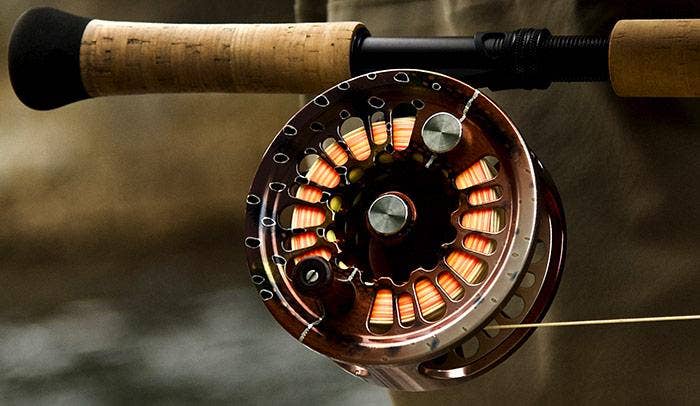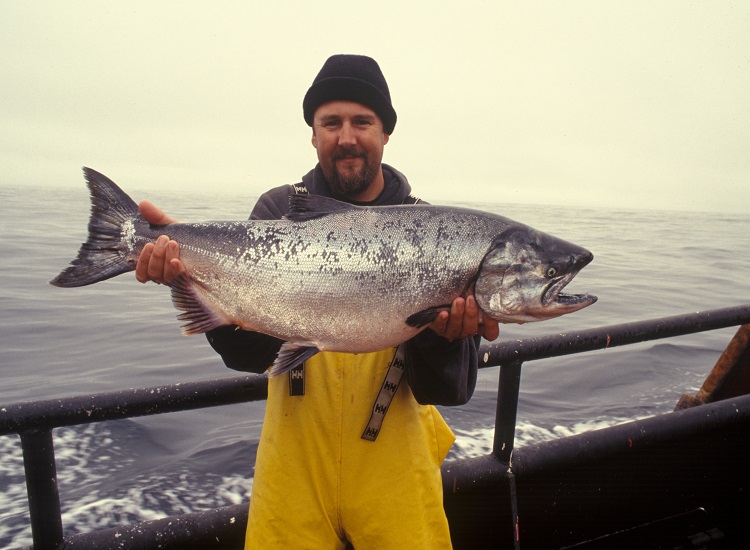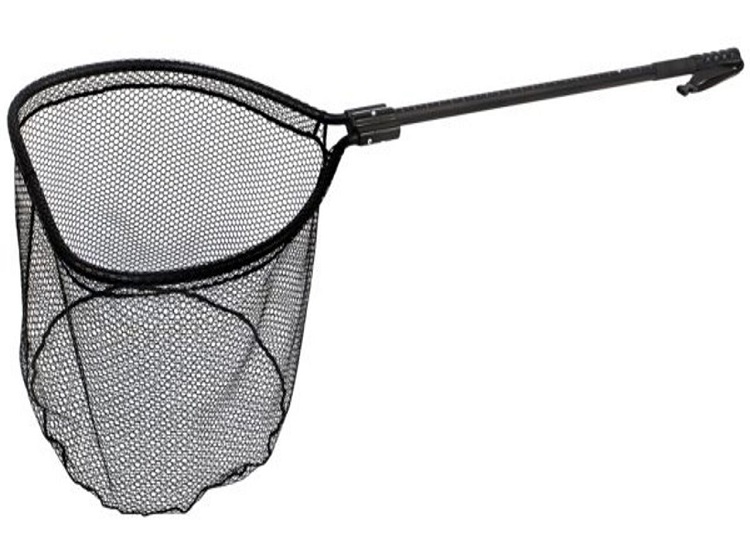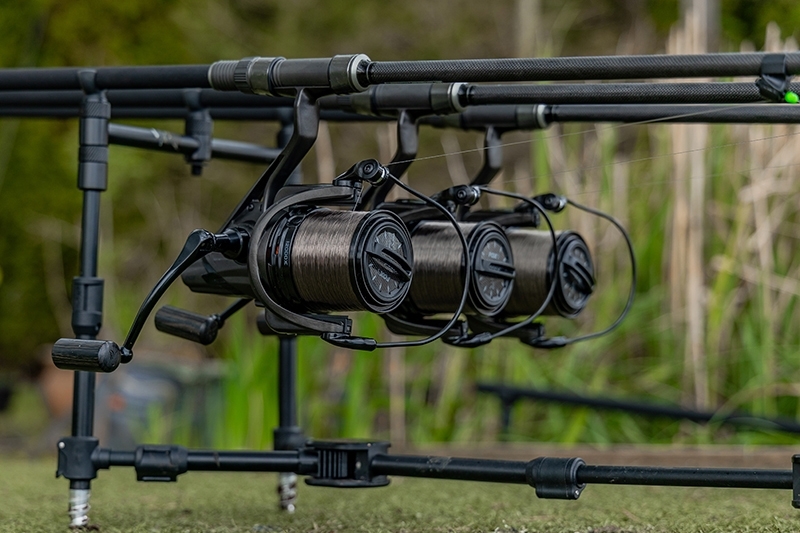Are you ready to reel in the big one and test your angling skills? Fly fishing is a popular outdoor activity that requires patience, skill, and the right equipment. One of the most important pieces of gear for any fly fisherman or woman is their reel. But with so many different types of fly fishing reels on the market, it can be overwhelming to choose the right one for your needs. In this beginner’s guide to fly fishing reels, we’ll explore everything you need to know about selecting, using, and caring for your reel – so you can focus on what really matters: catching fish!
The Different Types of Fly Fishing Reels
Fly fishing reels come in a variety of styles and sizes, each with its own distinct features. The three main types of fly fishing reels are large arbor, mid arbor, and standard arbors.
Large arbor reels have a larger spool diameter that allows for faster retrieval rates and more line capacity. They’re perfect for saltwater or big game fishing where speed is essential.
Mid arbor reels strike a balance between the other two reel types, providing good line capacity without sacrificing too much speed. They’re suitable for most freshwater applications.
Standard arbors are traditional fly fishing reels that have been around since the early days of the sport. They tend to be smaller than their counterparts but are still viable options for beginners or those on a budget.
Another factor to consider when choosing your reel is whether you want it to be machined or cast. Machined reels offer superior durability and precision while cast ones are often less expensive but may not last as long.
Ultimately, the type of fly fishing reel you choose will depend on your unique needs and preferences as an angler.
How to Choose the Right Fly Fishing Reel for You
When it comes to fly fishing, the reel you choose can make all the difference in your experience. But with so many options on the market, how do you know which one is right for you? Here are some things to consider when choosing a fly fishing reel.
First and foremost, think about what type of fish you’ll be targeting. If you’re going after smaller trout or panfish, a lightweight reel may suffice. However, if you plan on catching larger species like salmon or steelhead, a heavier-duty reel will be necessary.
Next, consider the material of the reel itself. While many anglers prefer traditional aluminum reels for their durability and strength, others opt for lighter materials like graphite or plastic.
Another important factor is drag system – this feature determines how much resistance your line will encounter when reeling in a fish. Disc drags tend to provide better control over bigger fish than click-and-pawl systems.
Don’t forget about price – while high-end reels may offer more features and durability overall compared to cheaper models, they might not necessarily fit within everyone’s budget. Ultimately though,a good quality mid-range option should suit most beginners well!
The Best Fly Fishing Reels on the Market
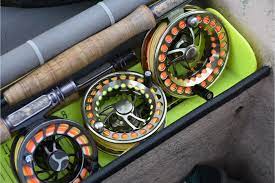
When it comes to fly fishing reels, there are a lot of options on the market. From beginner models to high-end options for experienced anglers, it can be tough to know where to start your search. To help narrow down your choices, we’ve put together a list of some of the best fly fishing reels on the market.
First up is the Orvis Hydros SL Fly Reel. This sleek reel is made with aircraft-grade aluminum and features a super-large arbor design that allows for quick line retrieval. It also has an incredibly smooth drag system that can handle larger fish with ease.
Another great option is the Ross Evolution LTX Fly Reel. With its lightweight construction and buttery-smooth drag system, this reel has quickly become a favorite among anglers. It’s also built to last, thanks to its machined aluminum frame and stainless steel components.
If you’re looking for something more budget-friendly, check out the Redington Behemoth Fly Reel. Despite its affordable price tag, this reel packs quite a punch with its powerful drag system and large arbor design.
We have the Hardy Ultralite CADD Fly Reel which boasts impressive strength combined with lightness making it comfortable when used throughout extended periods without experiencing fatigue -greatly efficient especially in freshwater settings-.
No matter what type of fishing you plan on doing or how much you’re willing to spend on gear; these reels will keep up with all your demands successfully!
How to Use a Fly Fishing Reel
Using a fly fishing reel can be daunting for beginners, but with some practice and guidance, it can become an enjoyable aspect of the sport. Before you start using your fly fishing reel, make sure that it’s properly attached to your rod. Once this is done, you’re ready to start practicing casting.
When casting with a fly fishing reel, make sure that the line is pulled through the guides on your rod before starting. Hold onto the line with your non-dominant hand while holding onto the rod handle with your dominant hand.
Next, use a flicking motion to cast out the line and let it settle on top of or in front of where you believe fish may be lurking. Make sure not to whip or snap your wrist too hard as this can cause tangles in your line.
Once you’ve caught a fish, gently reel it in by turning the handle clockwise. If there’s resistance from the fish pulling against you, let them tire themselves out before attempting to bring them closer.
Remember to always keep an eye on how much slack is in your line so that when reeling in a fish or recasting after catching one, there are no tangles or knots causing issues down the road. With these tips and some patience and practice under your belt, using a fly fishing reel will become second nature!
Tips for Caring for Your Fly Fishing Reel
Taking care of your fly fishing reel is essential if you want it to work properly and last for a long time. Here are some tips on how to keep your reel in top condition:
First, always rinse your reel with fresh water after each use. This helps remove any salt or dirt that may have accumulated during fishing.
Secondly, avoid dropping or banging the reel against hard surfaces as this can cause damage to the internal parts of the mechanism.
Thirdly, lubricate the moving parts regularly using a light oil or grease specifically designed for fishing reels. This will help prevent rusting and ensure smooth movement.
Fourthly, store your fly fishing reel in a dry place away from direct sunlight when not in use. Always keep it covered with a protective case to prevent dust and debris from accumulating on its surface.
Inspect your reel periodically for signs of wear and tear such as cracks, rust or loose screws. If you notice any issues, take action immediately before they become worse problems.
By following these simple care tips for your fly fishing reel, you can extend its life span while ensuring that every angling experience remains memorable!
Conclusion
Fly fishing can be a rewarding and enjoyable experience for beginners and experts alike. Choosing the right reel is an important decision that can greatly impact your success on the water. It’s essential to consider factors such as size, weight, drag system, and material when selecting a reel.
Remember to take care of your fly fishing reel by cleaning it after each use and storing it properly. With proper maintenance, you can ensure that your reel lasts for many seasons to come.
We hope this guide has provided valuable information on different types of fly fishing reels available in the market today and how to choose one that suits your needs best. Happy Fishing.

